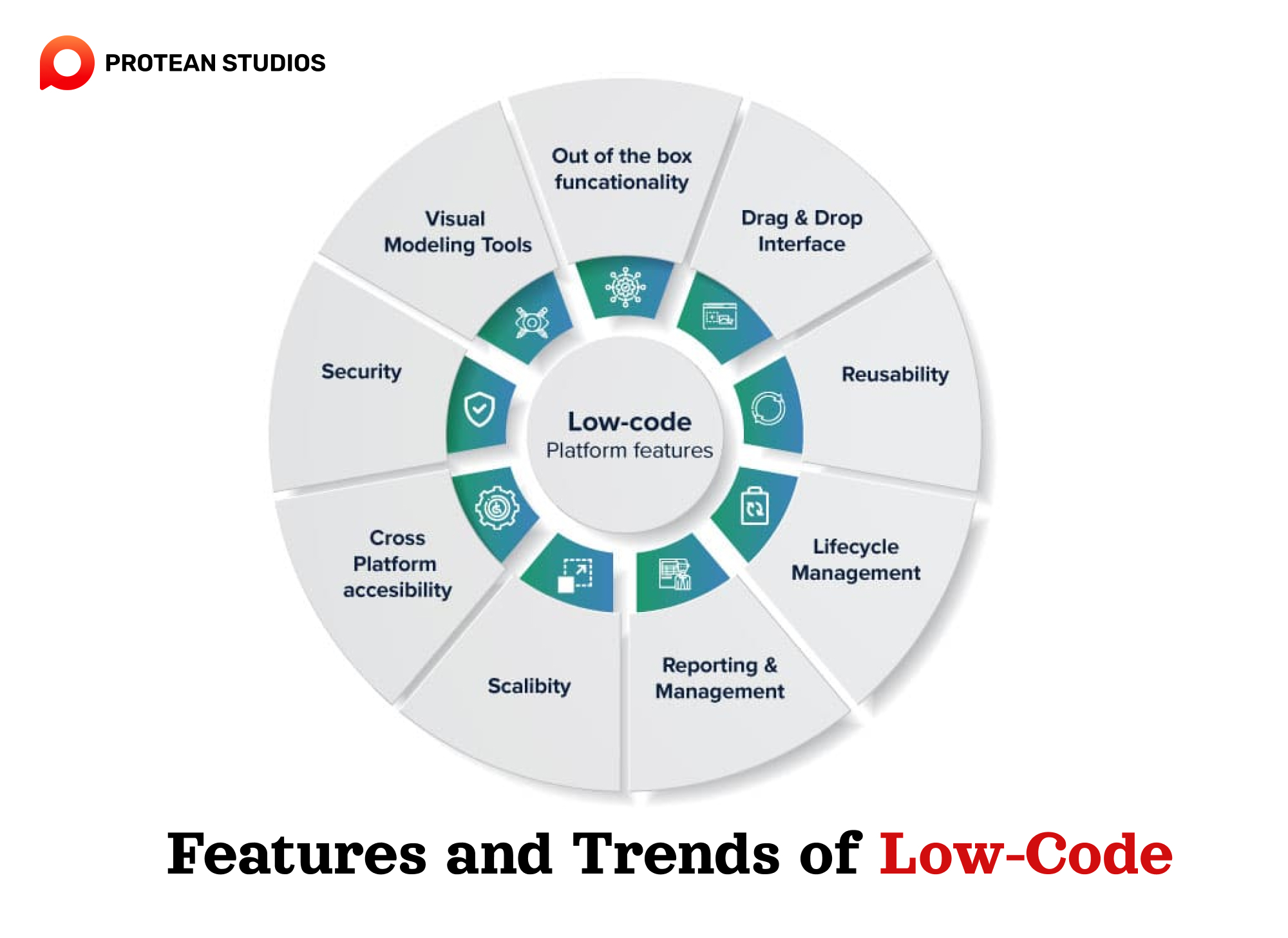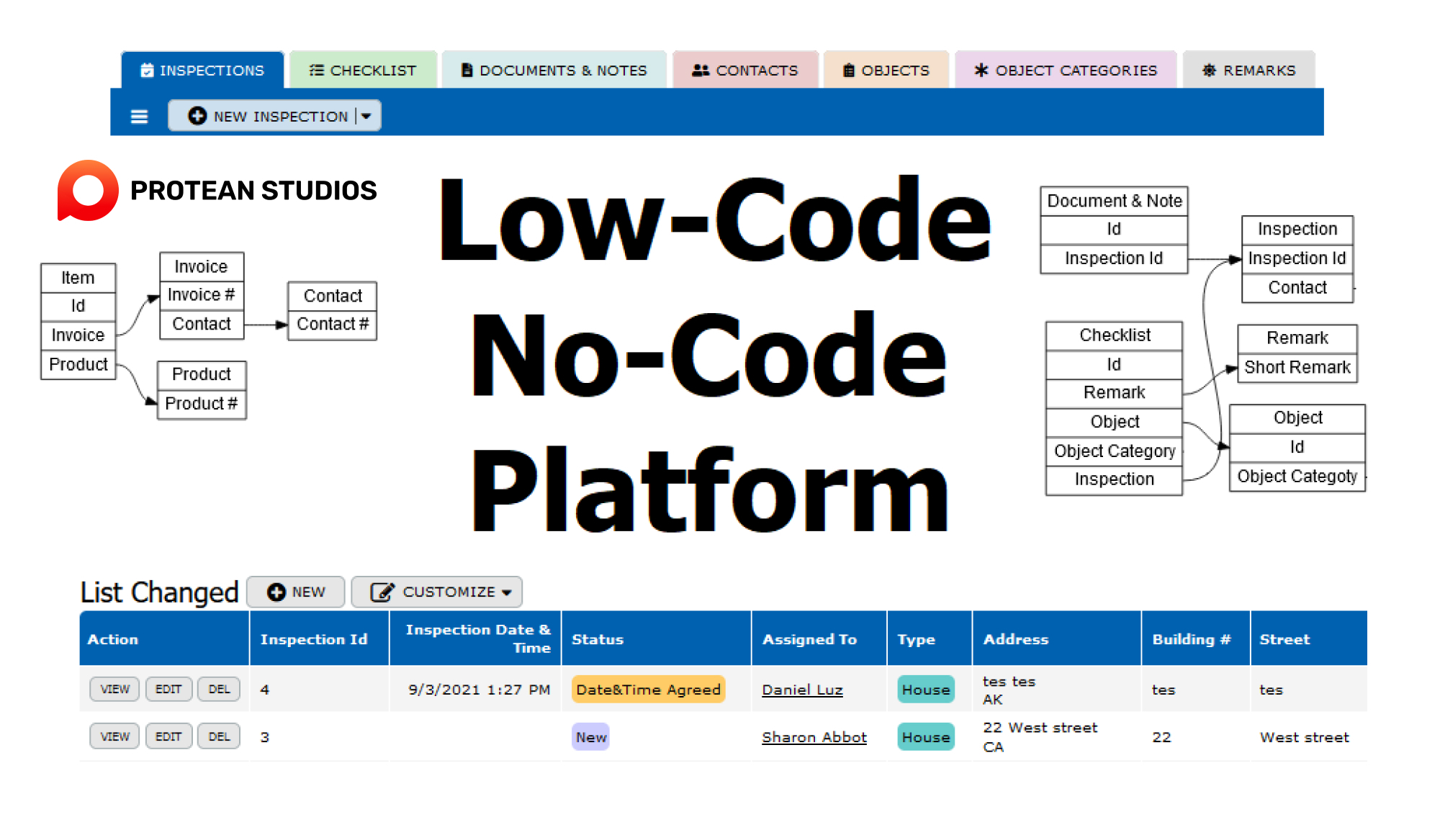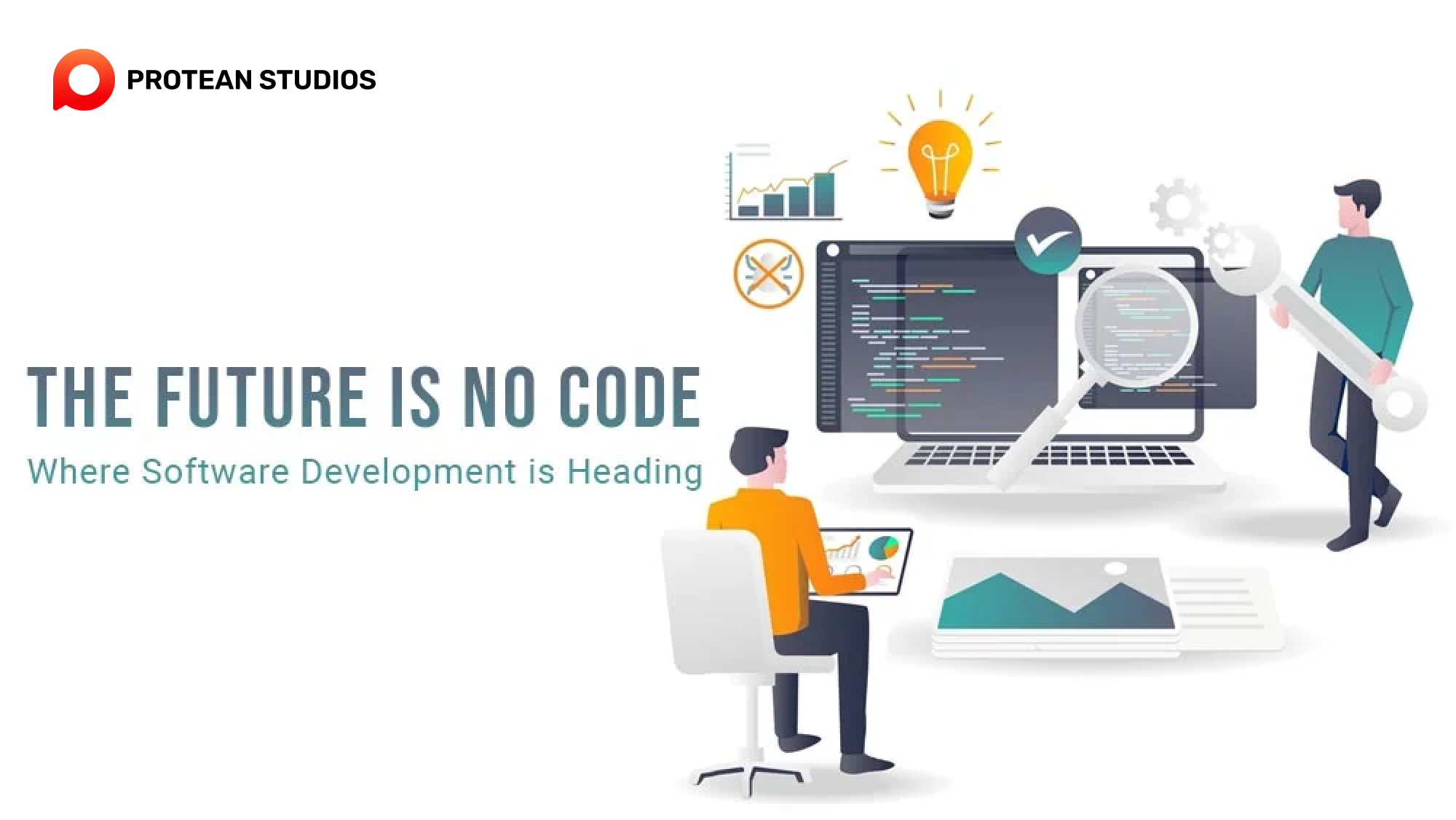In the fast-paced world of technology, the need for efficient software development is paramount. Traditional coding methods, while powerful, can be time-consuming and need specialized skills. This is where low-code and no-code platforms emerge as revolutionary solutions. This article dives into the world of low-code vs. no-code, exploring their similarities and distinctions to help you understand which approach best suits your needs.
Features of Low-Code vs. No-Code
The demand for new software has surged. IDC predicts that by 2023, more than 500 million digital applications and services will be created, matching the total developed over the past 40 years.
Yet, the supply of developers hasn't kept up. The pandemic doubled the demand for coders in 2021, leading to a shortage of 1.4 million professional software developers in the US alone, as reported by Morgan Stanley. According to The Economist, IT departments are already facing backlogs of up to 12 months, with demand for new projects on the rise.
To tackle this challenge, enterprises are turning to low-code and no-code platforms. These tools empower development teams to create robust applications using visual design tools and a drag-and-drop interface.
Instead of coding applications line-by-line, developers can design them as flowcharts. The platform then translates these designs into code. By minimizing or eliminating the need for manual coding, low-code solutions enable developers of all levels to build and deploy business applications.

With the right platform, a developer with just two years of experience can achieve productivity comparable to that of someone with decades of coding experience. Organizations can release software up to 10 times faster compared to traditional methods of development.
Read more: Low-Code And No-Code: Why Low-Code Reigns Supreme
Low-Code vs. No-Code: What are the differences?
Understanding the distinctions between "low-code" and "no-code" can be perplexing. How can you navigate the landscape of rapid application development platforms effectively?
According to Gartner, the key lies in looking beyond vendor hype and promises. Instead, focus on examining the platform's architecture and technological approaches to identify the best fit, regardless of whether it identifies as low-code, no-code, or both.
For enterprises, the ideal platform should address critical business challenges, integrate with external vendors and data sources, include essential technologies like business process management, process mining, and automation, and possess scalability to tackle future demands. It's crucial to consider how the platform will be utilized and who its primary users will be.

Gartner advises, "When evaluating no-code and low-code development tools, delve deeper than the vendor's marketing claims to understand the fundamental development approach of their platforms. Just because a platform is labeled 'low-code' doesn't mean it's for professional developers, and 'no-code' doesn't always imply it's for citizen developers."
A guide to starting low-code and no-code development
Starting with low-code and no-code development can be a game-changer for individuals and businesses looking to build applications.
1. Understand your needs.
Identify the problem:
Determine what problem you are trying to solve with your application.
Assess whether you need a simple solution (No-Code) or a more complex, customizable one (Low-Code).
Define Objectives:
Clearly outline your goals and what you hope to achieve with the application.
Focus on features and functionalities based on your objectives.
2. Choose the Right Platform
Research Platforms:
Look into various low-code and no-code platforms available, such as OutSystems, Mendix (low-code), or Bubble, and Zapier (no-code).
Consider factors like ease of use, integration capabilities, scalability, and cost.
Platform Trials: Take advantage of free trials or demos to test the platforms and see which one fits your needs best.
3. Learn the basics.
Training and Tutorials:
Use the online tutorials, courses, and documentation provided by the platform.
Many platforms offer comprehensive training materials and community forums.
Start Small:
Begin with simple projects to get familiar with the platform's interface and capabilities.
Progress to more complex applications as your confidence grows.
4. Plan your application.
Design the workflow:
Sketch out the workflow and user interface of your application.
Plan the data flow and how different components will interact.
Define the data structure:
Identify the data you need and how it will be structured.
Set up databases or data sources within the platform.
5. Build Your Application
Drag-and-Drop Interface:
Use the platform's drag-and-drop tools to build the application interface.
Add pre-built components like forms, buttons, and data tables.
Integrate Services:
Connect your application to other services and APIs, if needed.
Many platforms offer built-in integrations for popular services.
Test as You Go:
Test your application as you build to catch and fix issues.
Use the platform’s testing tools to simulate real-world usage.
6. Deploy and maintain
Deployment:
Once your application is ready, deploy it to your chosen environment.
Many platforms offer one-click deployment options.
Check Performance:
Use monitoring tools to track the performance of your application.
Check for any issues and optimize as needed.
Updates and Maintenance:
Keep your application updated with new features and security patches.
Use the platform’s maintenance tools to ensure your application runs smoothly.
7. Scale and Grow
Scaling Up:
If your application needs to handle more users or data, consider scaling up.
Many platforms offer easy-scaling options to accommodate growth.
Advanced Features:
Explore the advanced features of the platform as you become more comfortable.
Experiment with automation, AI, and other cutting-edge functionalities.
Examples and Success Stories
Simple Business App (No-Code): A small retail store uses a No-Code platform to create an inventory management system.
Low-code vs. no-code: What’s right for your organization?
To know the right platforms that suit your businesses, you need to consider some aspects.

Project Complexity:
Simple Workflows: No-code platforms excel at building basic applications with pre-defined functionalities. They're ideal for tasks like automating workflows, creating internal tools, or building simple customer portals.
Complex Functionality: Low-code platforms offer more flexibility and customization through built-in features or the ability to add custom code. They're better suited for applications with complex logic, integrations with existing systems, or specific user interface requirements.
Technical Expertise:
Citizen Developers: No-code platforms are perfect for citizen developers—business users with minimal coding knowledge. The drag-and-drop interface and pre-built components make them easy to use, even without programming experience.
Professional Developers: Low-code platforms cater to both citizen developers and professional programmers. Programmers can leverage the platform's features while still having the option to extend functionalities with custom code.
Desired Level of Customization:
Limited Customization Needs: If you focus on a quick and easy development process with pre-defined functionalities, a no-code platform is a good fit.
Need for Customization: Low-code platforms provide more control over application design and functionalities. You can customize workflows and user interfaces and integrate with external systems using built-in features or custom code.
Scalability Needs:
Small-Scale Applications: No-code platforms are well-suited for building and deploying small-scale applications for internal use or specific departments.
Large-Scale Applications: Low-code platforms offer better scalability for larger applications with a wider user base. You can manage complex data models, high user volumes, and integrate with enterprise systems.
------------------------------------
Ready to transform your ideas into reality? At Protean Studios, we specialize in IT outsourcing that brings your vision to life with efficiency and expertise. Whether you’re starting with simple projects or looking to tackle complex applications, our team is here to support you every step of the way. Partner with us today and watch your business thrive. Contact Protean Studios now to start your journey towards innovation and success!
Read more:




